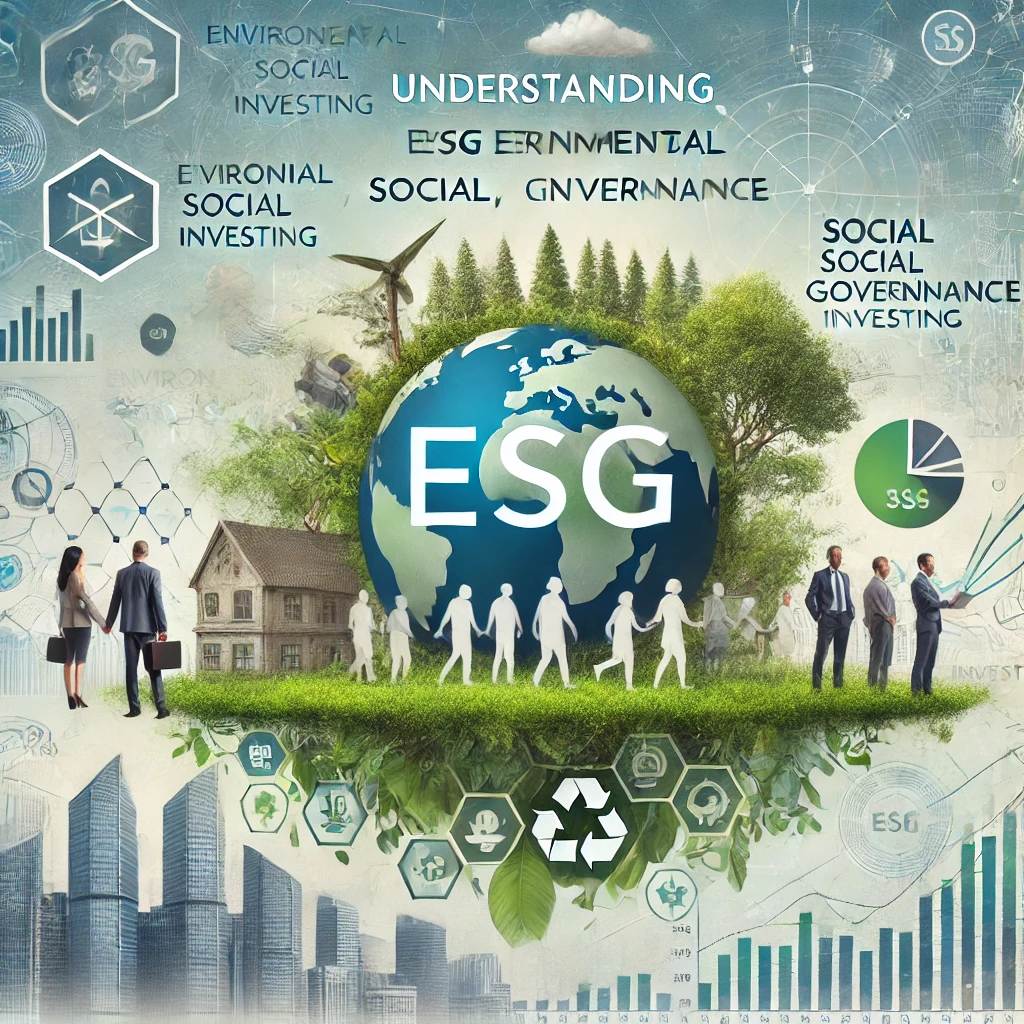
The Pitfalls of Constant Trading: Why You Need to Disconnect During Travel and Leisure
17/10/2024
How to Use Options in Stock Investing
19/10/2024Understanding ESG (Environmental, Social, Governance) Investing

Understanding ESG (Environmental, Social, Governance) Investing
Understanding ESG (Environmental, Social, Governance) Investing
Today, there’s a growing recognition of the fact that environmental, social, and governance (ESG) factors play a significant role in the long-term viability of all businesses. Particularly in the investing world, ESG factors have become more critical than ever. This guide seeks to provide a comprehensive understanding of ESG investing, why it’s important, and what it entails.

What is ESG Investing?
In the simplest terms, ESG investing, also known as sustainable investing, is an investment strategy that considers the environmental, social, and governance issues of companies during the portfolio selection process. It seeks to combine the aim of securing financial returns with maintaining high ethical and sustainability standards.
Why is ESG Investing Important?
ESG investing has rapidly gained prominence for several reasons. Investors have started recognizing the influential role that companies play in safeguarding the environment, developing society, and maintaining high governance standards. ESG investing aligns these roles with the investment decisions made by investors.
Furthermore, ESG investments have shown to be quite robust even during economic downturns. For instance, during the COVID-19 pandemic, ESG-focused equities tended to perform better than the global average.
The Three Pillars of ESG Investing
Environmental Factors
Environmental factors relate to a company’s interactions with the natural environment. Investors in ESG often consider factors such as a company’s carbon footprint, waste management, water usage, and how the company is adapting to climate change.
Social Factors
Social criteria in ESG investing analyze how a business manages relationships with its employees, customers, and communities where it operates. These factors include employee engagement, diversity and inclusion, human rights, labor standards, and consumer protection.
Governance Factors
Governance deals with a company’s leadership structure, executive pay, internal controls, shareholder rights, and business ethics. This pillar assesses the integrity of the company’s management and how well their practices align with shareholder and societal expectations.
ESG Investing And Traditional Investing: What’s The Difference?
Unlike traditional investing, which primarily focuses on financial performance, ESG investing gives equal importance to a company’s environmental, social, and governance practices. Additionally, while traditional investors primarily focus on short-term gains, ESG investors seek out companies intending to provide long term societal and financial benefits.
Investing in ESG Funds: The Process
Investing in ESG funds generally involves four main steps: screening, sustainability-themed investing, impact investing, and integration.
- Screening: Screening is a process by which investors exclude or specifically select companies or entire sectors based on ESG criteria.
- Sustainability-Themed Investing: Investors seeking sustainable-themed funds focus on investments in themes or assets specifically related to sustainability. These could include funds focused on green energy or ethical consumption.
- Impact Investing: Impact investing aims to generate a measurable social or environmental impact, alongside a financial return.
- Integration: The integration is a step where ESG factors are incorporated into traditional financial analysis. This justifies the thorough understanding of which factors will significantly affect investment risk and returns.
Conclusion
ESG investing is not a passing trend but a permanent shift in how we view investing. It recognizes that businesses don’t exist in a vacuum – they’re integral parts of our society and world. As we move into an era where accountability, sustainability, and ethical behavior are more important than ever, ESG investing offers a promising path forward.
By understanding and embracing ESG principles, investors can drive positive change in the world while also securing robust financial returns. Thus, ESG investing offers not only a win for investors but also a win for society and the environment.
To make ESG investing an integral part of your investment philosophy, one must gain deep knowledge, understanding, and respect for the ESG principles at a grassroots level. Only then can investors choose companies that adhere to these practices and make informed long-term investment decisions.
In conclusion, ESG investing is a comprehensive approach that considers a more full universe of non-traditional risks and opportunities. It’s a strategy that goes beyond just the numbers – it’s all about creating sustainable value for all stakeholders.
Understanding Market Capitalization


